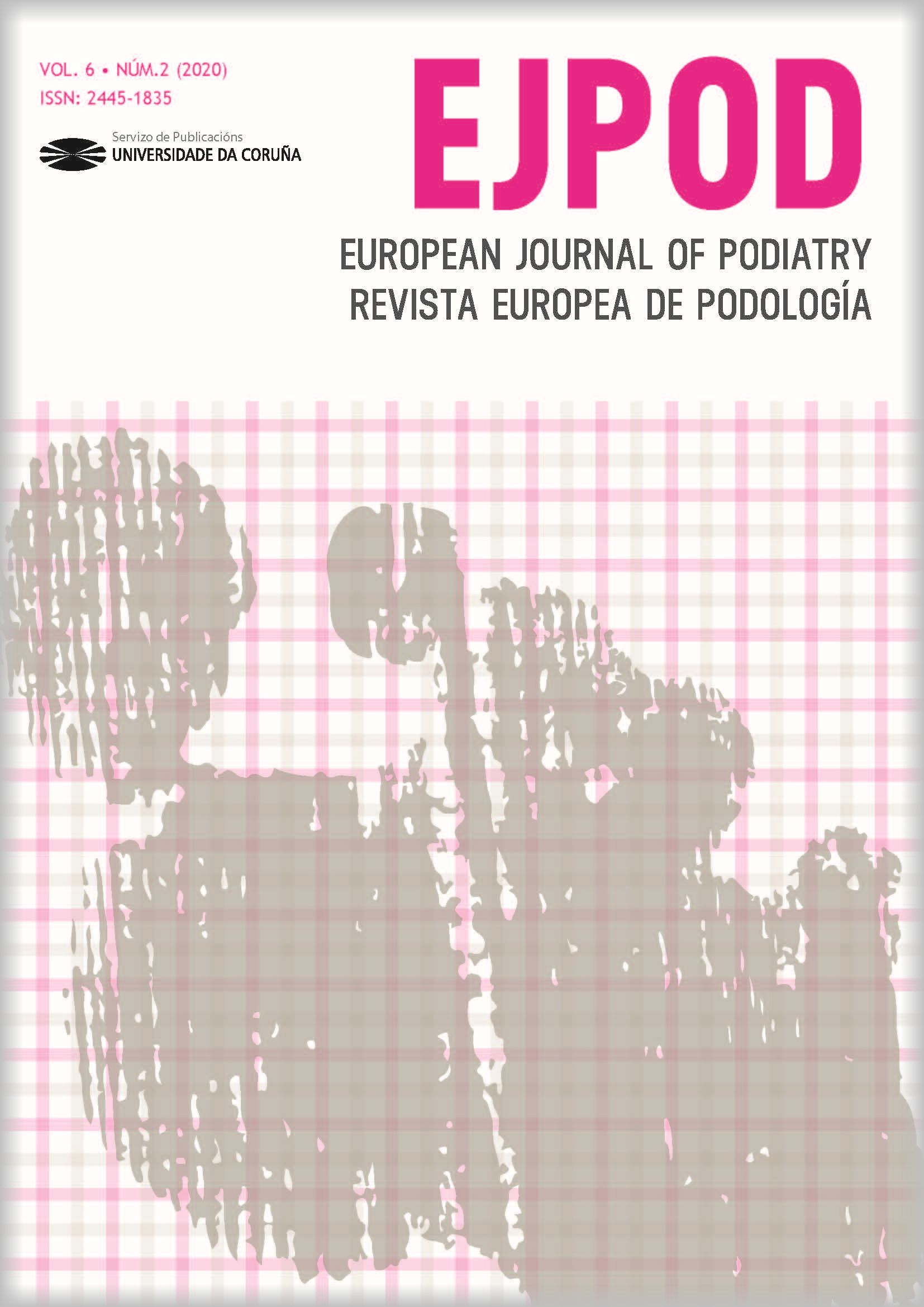Estudiando la microbiota a través de la prevalencia de portadores nasales de Staphylococcus aureus en los estudiantes de Microbiología del Grado de Podología
Contenido principal del artículo
DOI:
https://doi.org/10.17979/ejpod.2020.6.2.7027Resumen
Objetivos. Se ha planteado como objetivo la mejora de la calidad de la docencia de la Microbiología mediante la actualización de la metodología docente, introduciendo como actividad el aprendizaje activo basado en la detección de portadores nasales de Staphylococcus aureus para conseguir mejorar las competencias que deberán adquirir los estudiantes como parte de su formación integral.
Material y métodos. En este estudio han participado 56 y 72 alumnos (128 alumnos en total) del Grado de Podología de la Universidad Complutense de Madrid de los cursos 2018-2019 y 2019-2020, respectivamente. Los alumnos asistieron al laboratorio de Microbiología y completaron el estudio.
Resultados. Un total de 29 alumnos (22,7%) fueron portadores nasales de S. aureus, uno de los cuales fue portador de S. aureus resistente a meticilina (SARM). La valoración de la actividad por parte de los alumnos fue muy positiva y se produjo una mejora general en la adquisición de conocimientos.
Conclusión. El trabajo en el laboratorio de Microbiología unido a la actualización en la metodología docente puede mejorar el rendimiento académico de los estudiantes de Microbiología al relacionarlo con su futura práctica profesional y el diagnóstico microbiológico.
Palabras clave:
Detalles del artículo
Referencias
Gómez-Lus ML, Bas P, Alou L. Adaptación de la enseñanza de la Microbiología en el Grado de Podología incluyendo docencia práctica. Rev Int de Ciencias Podol. 2019 Jun 13;(2):131-5.
Freeman S, Eddy SL, McDonough M, Smith MK, Okoroafor N, Jordt H, et al. Active learning increases student performance in science, engineering, and mathematics. Proc Natl Acad Sci U S A. 2014 Jun 10;111(23):8410-5.
Rodríguez-Avial C, Alvarez-Novoa A, Losa A, Picazo JJ. Aumento significativo de la colonización por Staphylococcus aureus entre los estudiantes de medicina durante la realización de las prácticas en el hospital. Enferm Infecc Microbiol Clin. 2013 Oct;31(8):516-9.
de Benito S, Alou L, Becerro-de-Bengoa-Vallejo R, Losa-Iglesias ME, Gómez-Lus ML, Collado L, Sevillano D. Prevalence of Staphylococcus spp. nasal colonization among doctors of podiatric medicine and associated risk factors in Spain. Antimicrob Resist Infect Control. 2018 Feb 17;7:24.
Clinical and Laboratory Standards Institute. Performance Standards for Antimicrobial Susceptibility Testing: 25th Informational Supplement M100-S15. CLSI, Wayne, PA, USA, 2015.
Kluytmans J, van Belkum A, Verbrugh H. Nasal carriage of Staphylococcus aureus: epidemiology, underlying mechanisms, and associated risks. Clin Microbiol Rev. 1997 Jul;10(3):505-20.
Boada A, Almeda J, Grenzner E, Pons-Vigués M, Morros R, Juvé R, et al. Prevalencia de portadores nasales de Staphylococcus aureus y Streptococcus pneumoniae en atención primaria y factores asociados a la colonización. Enferm Infecc Microbiol Clin. 2015 Aug-Sep;33(7):451-7.
Graham PL 3rd, Lin SX, Larson EL. A U.S. population-based survey of Staphylococcus aureus colonization. Ann Intern Med. 2006 Mar 7;144(5):318-25.
Hogan PG, Mork RL, Boyle MG, Muenks CE, Morelli JJ, Thompson RM, et al. Interplay of personal, pet, and environmental colonization in households affected by community-associated methicillin-resistant Staphylococcus aureus. J Infect. 2019 Mar;78(3):200-207.
Leman R, Alvarado-Ramy F, Pocock S, Barg N, Kellum M, McAllister S, et al. Nasal carriage of methicillin-resistant Staphylococcus aureus in an American Indian population. Infect Control Hosp Epidemiol. 2004 Feb;25(2):121-5.
Sanmartí N. 10 ideas clave: evaluar para aprender. 1st ed. Barcelona: Graó; 2007.
Álvarez JM. Evaluar para conocer, examinar para excluir. Madrid: Morata; 2001.
Espinosa-Ríos EA; González-López KD; Hernández-Ramírez LT. Las prácticas de laboratorio: una estrategia didáctica en la construcción de conocimiento científico escolar. Entramado. 2016; 23: 266-81.
Prieto, A. La Pirámide del Aprendizaje. Biblioteca de la Universidad Complutense de Madrid. Disponible en: http://biblioteca.ucm.es/revcul/e-learning-innova/27/art1263.pdf
Espino M, Abín L, Silva M, Álvarez MM, Díaz LA, Alemán L. Evaluación de una estrategia docente para las prácticas de laboratorio de Microbiología y Parasitología Médica en Medicina. Educ Med Super. 2011;25(4):438-50.



